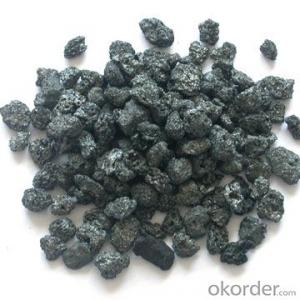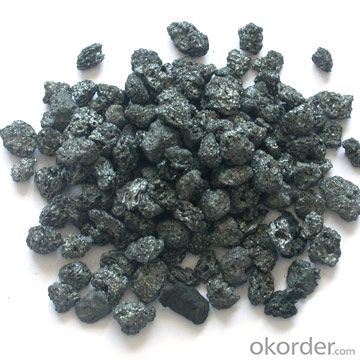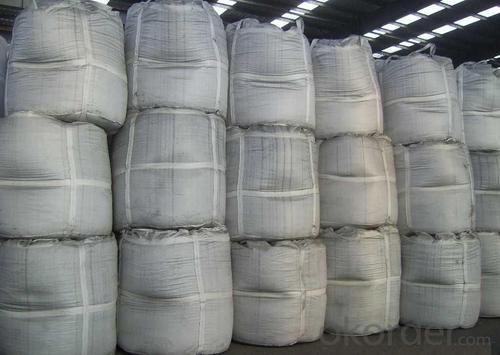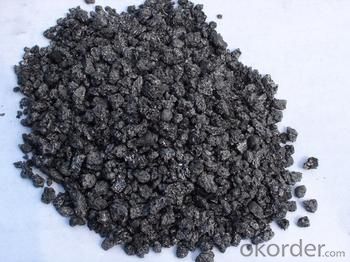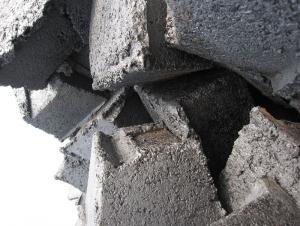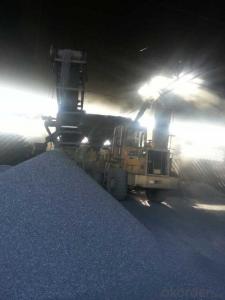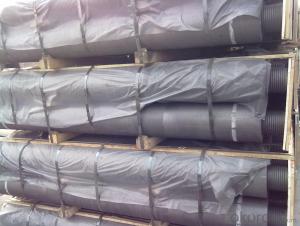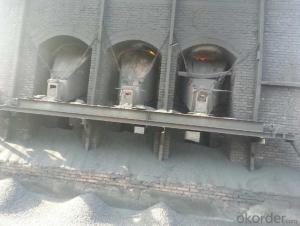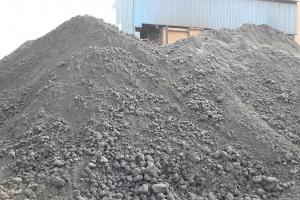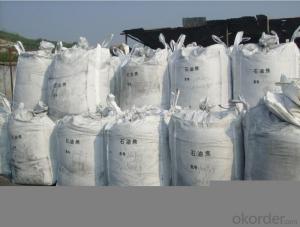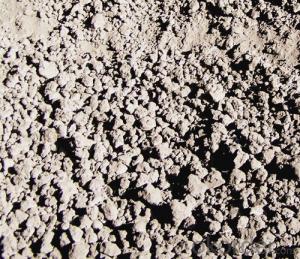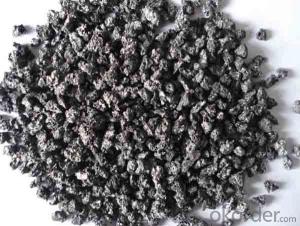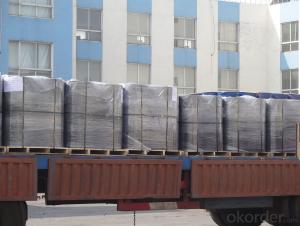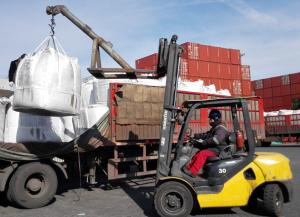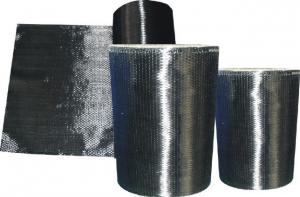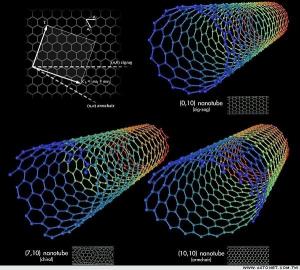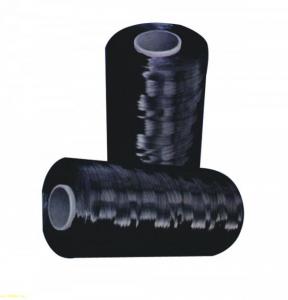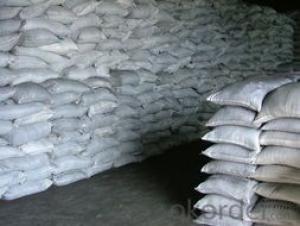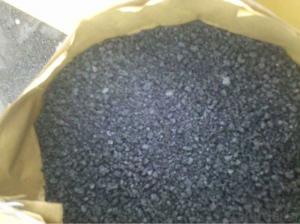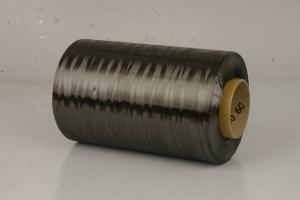Calcined Petroleum Coke Specification of CNBM in China
- Loading Port:
- Tianjin
- Payment Terms:
- TT OR LC
- Min Order Qty:
- 1 m.t.
- Supply Capability:
- 10000000 m.t./month
OKorder Service Pledge
OKorder Financial Service
You Might Also Like
1.Structure of Calcined Petroleum Coke Description
Calcined Petroleum Coke is made from raw petroleum coke,which is calcined in furnace at a high temperature(1200-1300℃).CPC/Calcined Petroleum Coke is widely used in steelmaking,castings manufacture and other metallurgical industry as a kind of recarburizer because of its high fixed carbon content,low sulfur content and high absorb rate.Besides,it is also a best kind of raw materials for producing artifical graphite(GPC/Graphitized Petroleum Coke) under the graphitizing temperature(2800℃).
2.Main Features of the Calcined Petroleum Coke
High-purity graphitized petroleum coke is made from high quality petroleum coke under a temperature of 2,500-3,500°C. As a high-purity carbon material, it has characteristics of high fixed carbon content, low sulfur, low ash, low porosity etc.It can be used as carbon raiser (Recarburizer) to produce high quality steel,cast iron and alloy.It can also be used in plastic and rubber as an additive.
3. Calcined Petroleum Coke Images
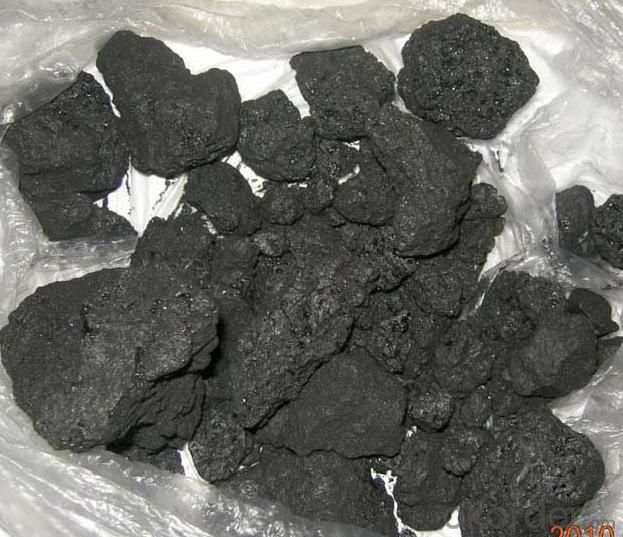
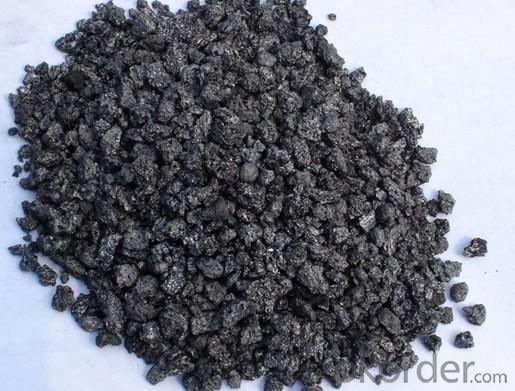
4. Calcined Petroleum Coke Specification
Physical Properties:
| Element | Percentage |
| Real Density | 2.06 g/cc |
| Apparent Density | 1.40 g/cc |
| Hard grove grindability index | 33-43 |
Standard Sizes (Granulometry):
0-4 mm, 0.5-3 mm, 0-25 mm, 1-4 mm, 2-8 mm We also supply as per customer's requirement.
Chemical Properties :
Fixed Carbon | Sulphur Content | Moisture | V.Matter | Ash |
98% | 0.6%max | 5%max | 0.7max | 0.5%max |
98.5min | 0.5%max | 5%max | 0.5max | 0.5%max |
5.FAQ of Calcined Petroleum Coke
1). Q: Are you a factory or trading company?
A: We are a factory.
2). Q: Where is your factory located? How can I visit there?
A: Our factory is located in ShanXi, HeNan, China. You are warmly welcomed to visit us!
3). Q: How can I get some samples?
A: Please connect me for samples
4). Q: Can the price be cheaper?
A: Of course, you will be offered a good discount for big amount.
- Q: Why does the carbon content of steel increase and the mechanical properties change?
- 3, according to the forming method classification: (1) forging steel; (2) cast steel; (3) hot rolled steel; (4) cold drawn steel4., according to chemical classification(1): A. carbon steel low carbon steel (C = 0.25%); B. (C = 0.25~0.60%) in carbon steel high carbon steel; C. (C = 0.60%).(2): A. alloy steel, low alloy steel (alloy element content is less than or equal to 5%) B. alloy (5~10% alloy element content, high alloy steel (C.) alloy element content > 10%).5. Classification according to metallographic structure(1) annealed state of A. eutectoid steel (ferrite + Zhu Guangti), B. eutectoid steel (Zhu Guangti), C. eutectoid steel (Zhu Guangti + cementite), D., bainitic steel (Zhu Guangti + seepage body)(2) normalizing condition: A. pearlitic steel; B. bainitic steel; C. martensitic steel; D. austenitic steel(3) no phase change or partial phase change occurs6, according to smelting method classification(1) according to the kind of furnaceA.: open hearth steel (a) acid open hearth steel; (b) basic open hearth steel.B. converter steel: (a) the Bessemer steel; (b) basic Bessemer steel. Or (a) bottom blown converter steel; (b) (c) side blown converter steel; BOF steel.C. electric furnace steel: electric arc furnace (a) steel; steel electroslag furnace (b); (c) induction furnace steel; (d) vacuum consumable steel; (E) electron beam furnace.(2) according to the degree of deoxidization and pouring systemA. boiling steel; B. semi killed steel; C. killed steel; D. special killed steel
- Q: What are carbon-based superconductors?
- Carbon-based superconductors are materials that exhibit superconductivity, which is the ability to conduct electricity with zero resistance, at relatively high temperatures, using carbon as the main component. These materials have unique properties that make them promising candidates for various technological applications, such as energy storage and transmission systems.
- Q: What is carbon offsetting in the food industry?
- Carbon offsetting in the food industry refers to the practice of neutralizing or compensating for the greenhouse gas emissions associated with food production and distribution processes. It is a way for food companies to take responsibility for their carbon footprint and contribute to global efforts in mitigating climate change. Food production and distribution contribute significantly to greenhouse gas emissions, mainly through activities such as deforestation, land use changes, energy consumption, and transportation. Carbon offsetting allows companies in the food industry to invest in projects or initiatives that reduce or remove an equivalent amount of carbon dioxide from the atmosphere, effectively balancing out their emissions. There are various methods of carbon offsetting in the food industry. One common approach is investing in renewable energy projects, such as wind farms or solar power installations, to offset the emissions produced from energy consumption in food processing facilities or transportation. Another method is supporting projects that promote sustainable agriculture practices, such as reforestation or afforestation efforts, which can sequester carbon dioxide from the atmosphere. Carbon offsetting in the food industry also extends to supply chain management. Companies can work with their suppliers to implement more sustainable farming practices, reduce waste, and optimize transportation routes to minimize emissions. By collaborating with farmers, producers, and distributors, food companies can collectively work towards reducing their overall carbon footprint and achieving carbon neutrality. It is important to note that carbon offsetting should not be seen as a substitute for reducing emissions at the source. Instead, it should be viewed as a complementary measure to support the transition towards more sustainable and low-carbon practices in the food industry. By offsetting their emissions, food companies can demonstrate their commitment to environmental stewardship and contribute to the global fight against climate change.
- Q: How does carbon dioxide affect textile production?
- Carbon dioxide can have various impacts on textile production. Firstly, the production of carbon dioxide during the manufacturing process of textiles contributes to the overall greenhouse gas emissions, which exacerbates climate change. This can lead to long-term consequences such as extreme weather events, rising temperatures, and sea-level rise, all of which can disrupt the supply chain and production of textiles. Moreover, carbon dioxide emissions from textile production contribute to air pollution, which can have adverse effects on human health. The release of this greenhouse gas can lead to respiratory problems and other respiratory diseases in workers exposed to high levels of carbon dioxide. Additionally, carbon dioxide is often used as a part of the dyeing and finishing process in textile production. This can have negative consequences for the environment as well. Carbon dioxide can contribute to water pollution when it is released into water bodies during the dyeing process, leading to the contamination of water sources and harming aquatic life. Furthermore, the excessive use of carbon dioxide in textile production can also have economic implications. As carbon dioxide is a byproduct of burning fossil fuels, its production is inherently linked to the consumption of non-renewable resources. The reliance on fossil fuels can make textile production vulnerable to price fluctuations, as the cost of carbon dioxide emissions and energy production can vary significantly. To mitigate the negative impacts of carbon dioxide on textile production, various measures can be taken. These include adopting cleaner production techniques and technologies that reduce carbon dioxide emissions, such as the use of renewable energy sources or implementing carbon capture and storage systems. Additionally, investing in sustainable and environmentally-friendly materials, such as organic cotton or recycled fibers, can also help reduce the carbon footprint of textile production. Overall, the reduction of carbon dioxide emissions in textile production is crucial for the industry to become more sustainable and mitigate its environmental and health impacts.
- Q: Carbon emissions trading stocks latest list of carbon emissions trading stocks what?
- Deason shares and Evergreen Group (biomass industry development leading countries to cope with climate change "(2014-2020)" an important direction to encourage); Yongan forestry (the potential target of forest carbon sequestration forestry circular economy demonstration enterprise). In addition, according to statistics, Huayin electric power (600744), Shenzhen (000027) and other energy shares of Shenzhen emissions exchange.
- Q: Does anyone know what the definition of carbon storage is in ecology? Thank you
- 1, store it in a certain range.2 carbon storageAbout 2. No need to explain1 of the words is "popular carbon dioxide storage".. Current storage practices are generally to collect CO2 in the atmosphere and inject gas into the ground
- Q: What are the properties of carbon-based rubber?
- Carbon-based rubber has several properties that make it a versatile and widely used material. Firstly, it has excellent elasticity and flexibility, allowing it to stretch and return to its original shape without deformation. Additionally, it is highly resistant to abrasion, making it durable and long-lasting. Carbon-based rubber is also known for its good electrical conductivity and thermal stability, making it suitable for applications in electrical insulation and high-temperature environments. Finally, it exhibits good chemical resistance, remaining unaffected by many oils, solvents, and chemicals. These properties make carbon-based rubber a preferred choice in various industries, including automotive, manufacturing, and construction.
- Q: I saw a cell phone in the magazine, the global release of 900, no camera, what function is F1 carbon fiber material, actually sold 40000 yuan a piece!.. Everyone said that the circulation is so small, worth so much money? Or carbon fiber material worth so much money?
- In fact, whether carbon fiber or 900 are gimmicks, he is in the advertising of this mobile phone to deceive people
- Q: What are the impacts of carbon emissions on the stability of kelp forests?
- Carbon emissions have significant impacts on the stability of kelp forests. Increased carbon dioxide levels in the atmosphere lead to ocean acidification, which negatively affects the growth and survival of kelp. Acidic conditions hinder the ability of kelp to absorb essential nutrients, weaken their structure, and make them more susceptible to damage from storms and other disturbances. Additionally, rising ocean temperatures associated with carbon emissions can lead to the expansion of harmful algal blooms that compete with kelp for light and nutrients. These combined effects pose a threat to the stability and biodiversity of kelp forests, with potential cascading impacts on the marine ecosystem.
- Q: What is carbon fiber and how is it used?
- Carbon fiber is a lightweight and incredibly strong material that is made from thin strands of carbon atoms bonded together in a specific pattern. It is known for its exceptional strength-to-weight ratio, making it significantly stronger than steel while being much lighter in weight. Carbon fiber is used in a wide range of industries and applications due to its unique properties. In the aerospace industry, it is commonly used to build aircraft components such as wings, fuselage sections, and engine parts. Its high strength and low weight help increase fuel efficiency and enhance overall performance. The automotive industry also extensively utilizes carbon fiber in the production of high-performance vehicles. Carbon fiber reinforced composites are used to manufacture various parts, including body panels, chassis components, and interior trims. The use of carbon fiber in automobiles not only reduces the overall weight of the vehicle, but also improves its structural integrity and enhances handling and fuel efficiency. Sports equipment manufacturers incorporate carbon fiber in the production of sporting goods such as tennis rackets, golf clubs, bicycles, and hockey sticks. The material's strength and stiffness allow for enhanced performance, increased power transfer, and improved durability. In addition, carbon fiber finds applications in the construction industry for reinforcing concrete structures, as well as in the manufacturing of wind turbine blades, boat hulls, and various other industrial components. Overall, carbon fiber's exceptional strength, lightweight nature, and versatility make it a preferred choice in industries where high-performance materials are required. Its use continues to expand as advancements in manufacturing techniques and cost reduction efforts make it more accessible to a wider range of applications.
Send your message to us
Calcined Petroleum Coke Specification of CNBM in China
- Loading Port:
- Tianjin
- Payment Terms:
- TT OR LC
- Min Order Qty:
- 1 m.t.
- Supply Capability:
- 10000000 m.t./month
OKorder Service Pledge
OKorder Financial Service
Similar products
Hot products
Hot Searches
Related keywords
